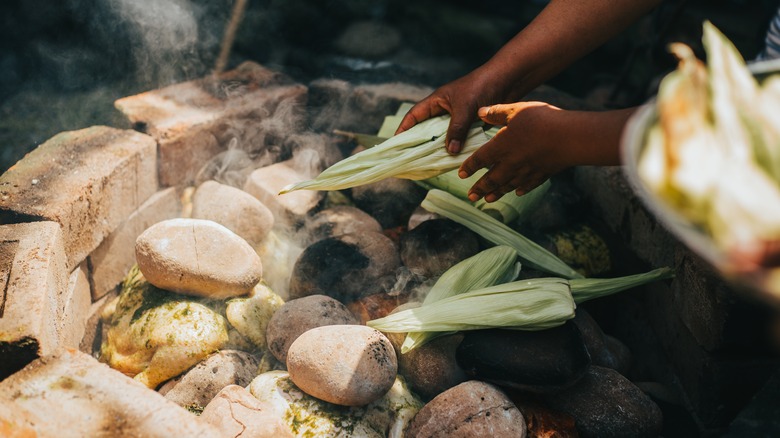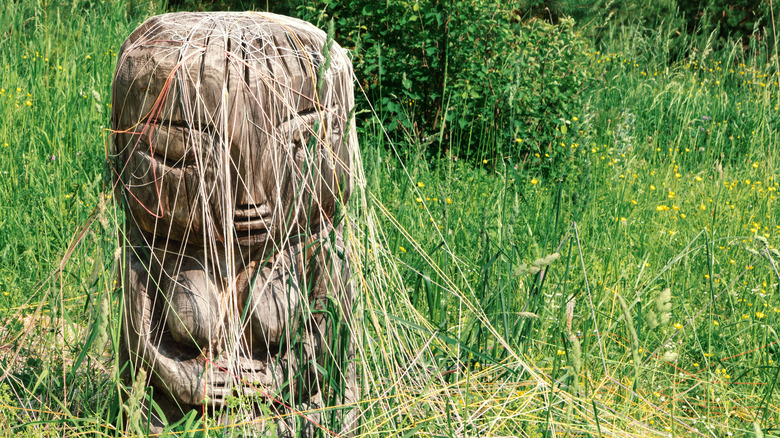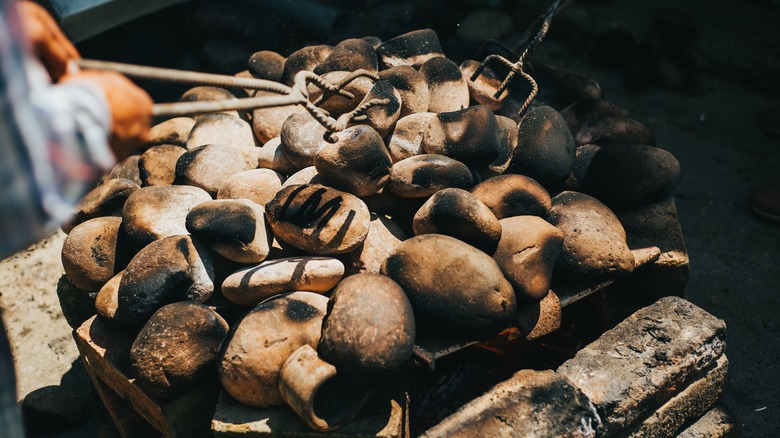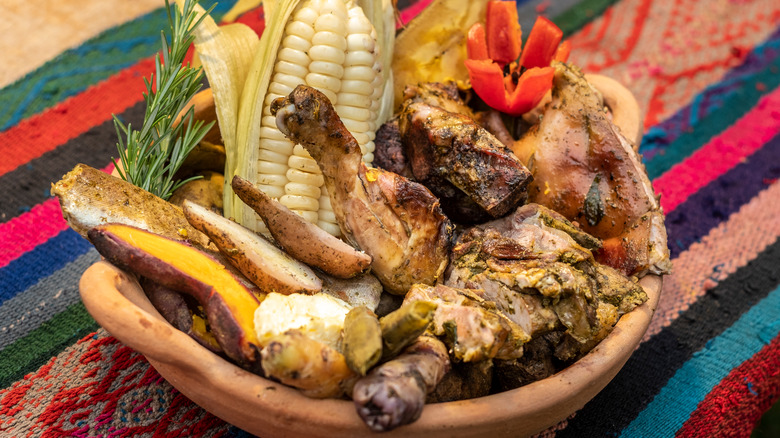Pachamanca: The Peruvian Comfort Food You Should Know
Underground "earth ovens" have been around for thousands of years, evidenced by archaeological finds and ongoing traditional ceremonies by deep-rooted cultural groups, notes the Minnesota Department of Natural Resources. Hawaii rolls out the luau feast featuring kalua cooking and imu ovens; India employs various versions of tandoor flatbread earth ovens; and Samoan communities roast meats and vegetables in an umu pit (via Matador Network). Most carry cultural meaning and a sense of connection to the past, including the sandpit Native American and New England clam and lobster bakes that persist today.
Those enduring culinary ties certainly remain strong in one comfort food from Peru: the pachamanca celebration. Reflecting the Quechuan name for "earth oven," pachamanca indicates the preparation of food in a deep rock-filled underground hole, according to Rainforest Cruises. Aside from the lure of an ancient cultural feast, there's another reason for learning the art of pachamanca cooking: It's an excellent way to feed large groups of people from a single earthen pit.
The history of pachamanca
Pachamama is the Incan Mother Earth goddess, and the process of cooking food inside the earth pays respect to her, explains Rainforest Cruises. It's seen as a way to return the food that she provided before bringing it back up from the earth to nourish humans. The original pachamanca feast tradition served as a ritual that revitalized the spirit, celebrated life, and promoted fertility.
The mythology ties to the Inca Empire and various Andean cultures, including Peru. Culture Trip notes that some historians date pachamanca feasts back at least 8,000 years. The social ritual continues today, especially for special occasions or to invoke blessings from ancient gods and goddesses. It can also be a way to welcome special visitors and those traveling throughout South America.
Constructing the pachamanca pit
Modern-day pachamanca feasts are still all about food and community, starting with the construction of the rocky pit. Participants dig a deep hole in the earth and line it with bricks, while dedicated fire-tenders heat volcanic stones and place them at bottom of the earth oven pit (via Serious Eats). The volcanic stones are a key element in the process because regular stones don't withstand the intense heat created by long cooking in a buried oven; it causes them to crumble, explains Rainforest Cruises.
When those preparing the food finally begin adding it to the sizzling hot rocks, the layering method employs damp banana and chincho (Peruvian herb) leaves to protect or steam each layer of food, per Andean Lodges.
Preparing and cooking the food
Once the pit is constructed, it's time to add various types of meat and vegetables that have been seasoned and marinated with local herbs and spices such as chincho, ají amarillo peppers, and huacatay, a prolific aromatic Andean herb similar to sweet basil or tarragon (via Andean Lodges). Layering is important, as the ingredients in the pachamanca feast cook at different speeds. Sweet potatoes, standard potatoes, and cassava go first, followed by meats such as seasoned lamb, chicken, alpaca, and pork, per Rainforest Cruises. Other vegetables like corn on the cob, lima beans, chilis, carrots, and fava beans join the pile later on. Humitas, a sweet dessert version of tamales made with condensed milk and spiced with cinnamon, often crowns the masterpiece creation, per Serious Eats.
A final burlap cloth or grass and a layer of soil tuck the whole meal into Mother Earth while it slow-bakes to perfection. Meanwhile, conversation flows, sauces evolve, cerveza and chicha (fermented corn drink) pour, and stories come to life.



